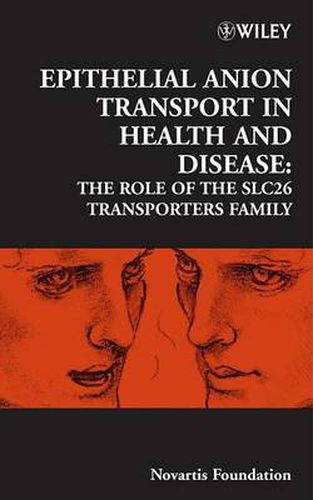Readings Newsletter
Become a Readings Member to make your shopping experience even easier.
Sign in or sign up for free!
You’re not far away from qualifying for FREE standard shipping within Australia
You’ve qualified for FREE standard shipping within Australia
The cart is loading…






Cl- absorption and HCO3- secretion are intimately associated processes vital to epithelial function, itself a key physiological activity. Until recently the transporters responsible remained obscure, but a breakthrough occurred with the discovery of the SLC26 transporters family. It is now clear that the SLC26 transporters have broad physiological functions since mutations in several members are linked to a variety of diseases. This book describes the properties of this family in detail, with contributions from the leading global researchers in the field. Complementary views from experts on other ion channels are offered in the discussions, which make fascinating reading. This family consists of at least 10 genes, each of which has several splice variants. Most members of the family are expressed in the luminal membrane of epithelial cells. Characterization of anion transport by three members has revealed that all function as Cl-/HCO3- exchangers, suggesting that SLC26 transporters are responsible for the luminal Cl-/HCO3- exchange activity. The SLC26 transporters are activated by the CF transmembrane conductance regulator and activate it in turn, leading to a model in which these molecules act together to mediate epithelial Cl- absorption and HCO3- secretion. The book includes chapters on the transport of other molecules by the SLC26 family, including oxalate in the kidney and sugars in cochlear hair cells amongst others. It also describes recent discoveries that most SLC26 transporters bind to scaffold proteins and that they all contain a conserved domain predicted to participate in protein-protein interactions. These suggest the SLC26 transporters exist in complexes with other Cl- and HCO3- transporters, and possibly other regulatory proteins. This book explores the functional role of these interactions, leading to better understanding of transepithelial fluid and electrolyte secretion and the diseases associated with it.
$9.00 standard shipping within Australia
FREE standard shipping within Australia for orders over $100.00
Express & International shipping calculated at checkout
Cl- absorption and HCO3- secretion are intimately associated processes vital to epithelial function, itself a key physiological activity. Until recently the transporters responsible remained obscure, but a breakthrough occurred with the discovery of the SLC26 transporters family. It is now clear that the SLC26 transporters have broad physiological functions since mutations in several members are linked to a variety of diseases. This book describes the properties of this family in detail, with contributions from the leading global researchers in the field. Complementary views from experts on other ion channels are offered in the discussions, which make fascinating reading. This family consists of at least 10 genes, each of which has several splice variants. Most members of the family are expressed in the luminal membrane of epithelial cells. Characterization of anion transport by three members has revealed that all function as Cl-/HCO3- exchangers, suggesting that SLC26 transporters are responsible for the luminal Cl-/HCO3- exchange activity. The SLC26 transporters are activated by the CF transmembrane conductance regulator and activate it in turn, leading to a model in which these molecules act together to mediate epithelial Cl- absorption and HCO3- secretion. The book includes chapters on the transport of other molecules by the SLC26 family, including oxalate in the kidney and sugars in cochlear hair cells amongst others. It also describes recent discoveries that most SLC26 transporters bind to scaffold proteins and that they all contain a conserved domain predicted to participate in protein-protein interactions. These suggest the SLC26 transporters exist in complexes with other Cl- and HCO3- transporters, and possibly other regulatory proteins. This book explores the functional role of these interactions, leading to better understanding of transepithelial fluid and electrolyte secretion and the diseases associated with it.